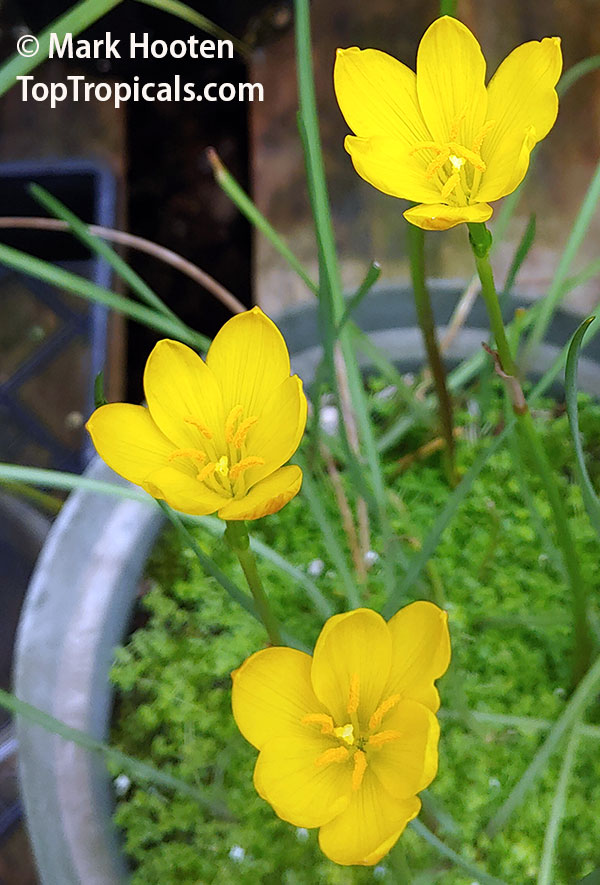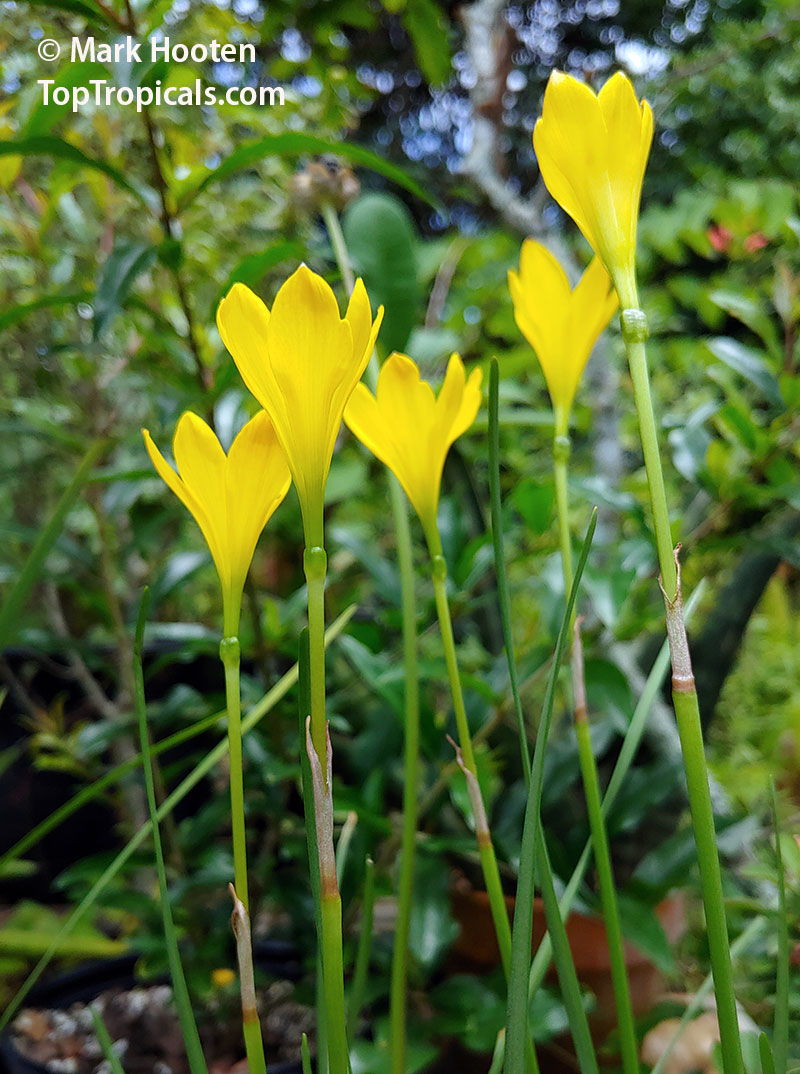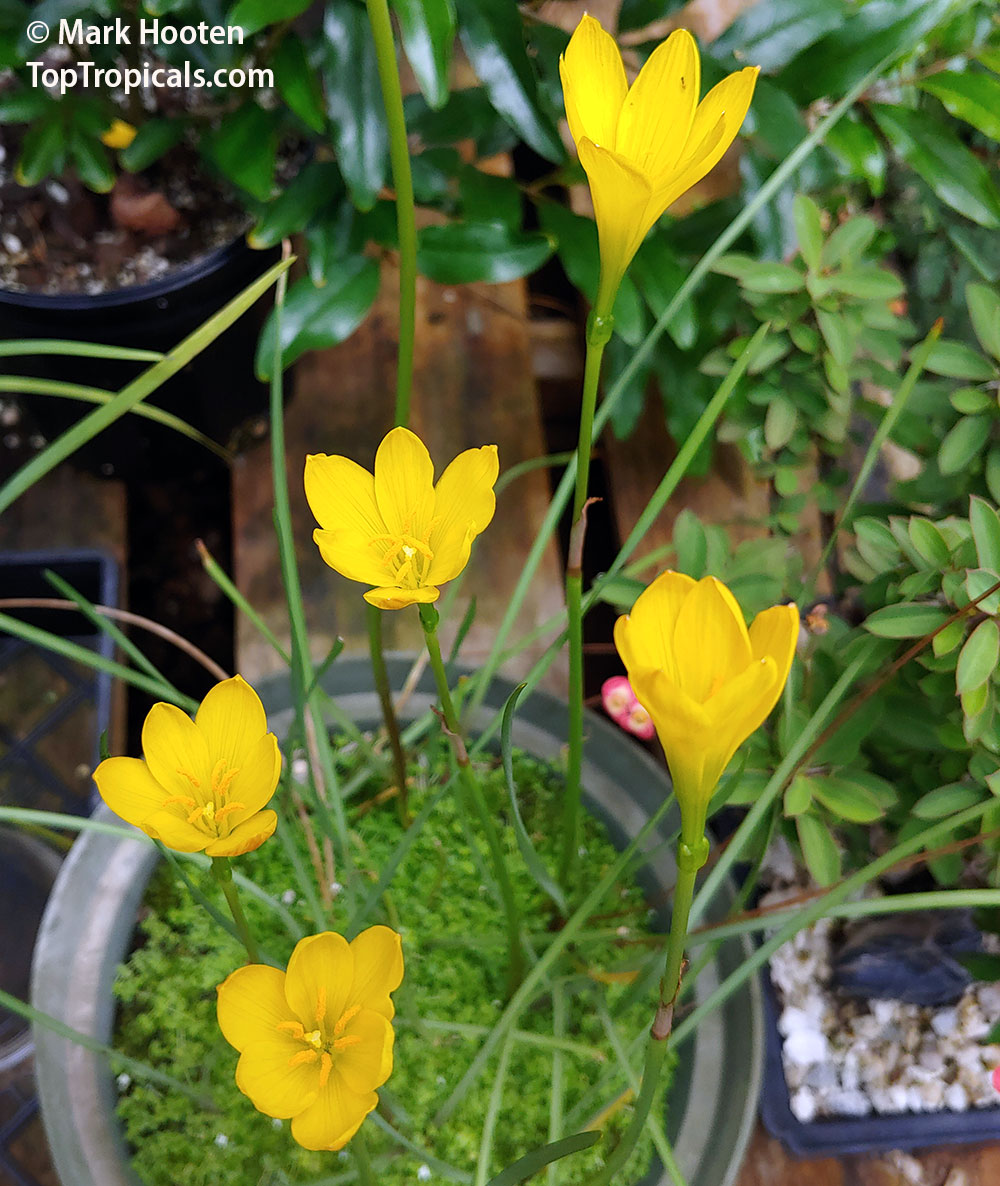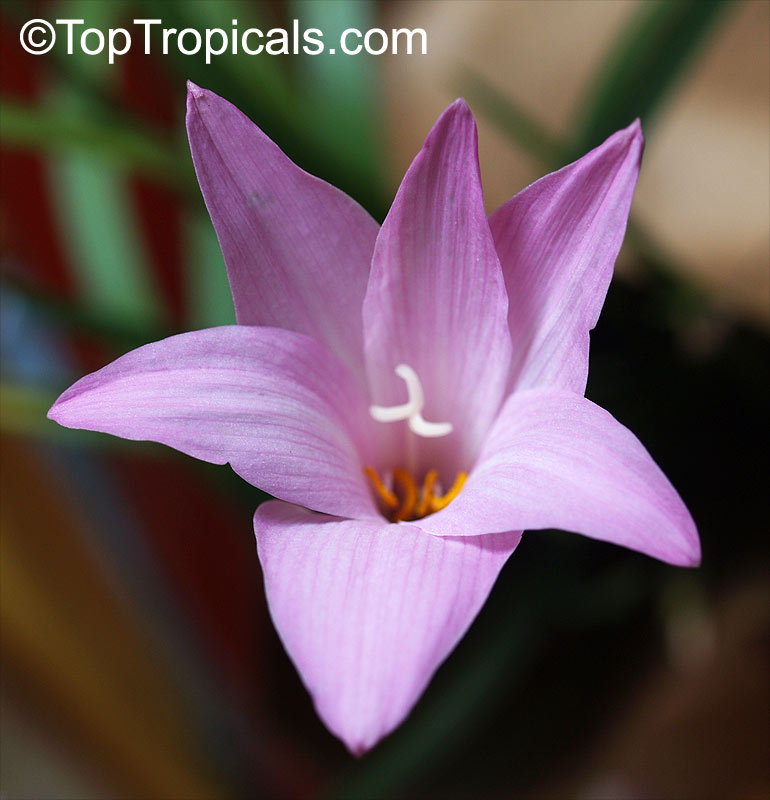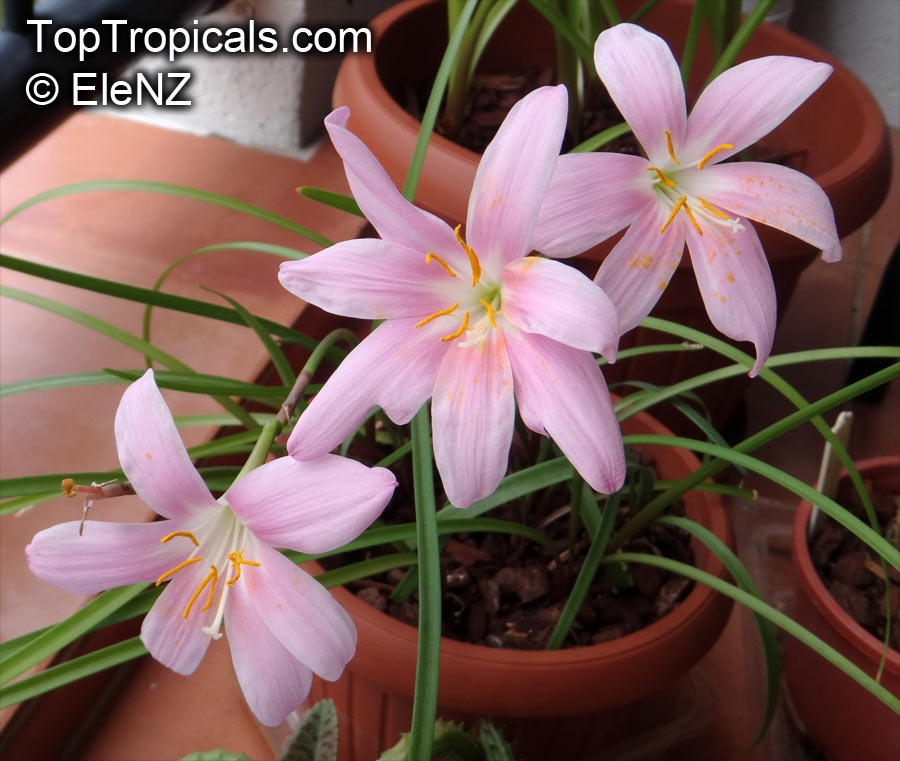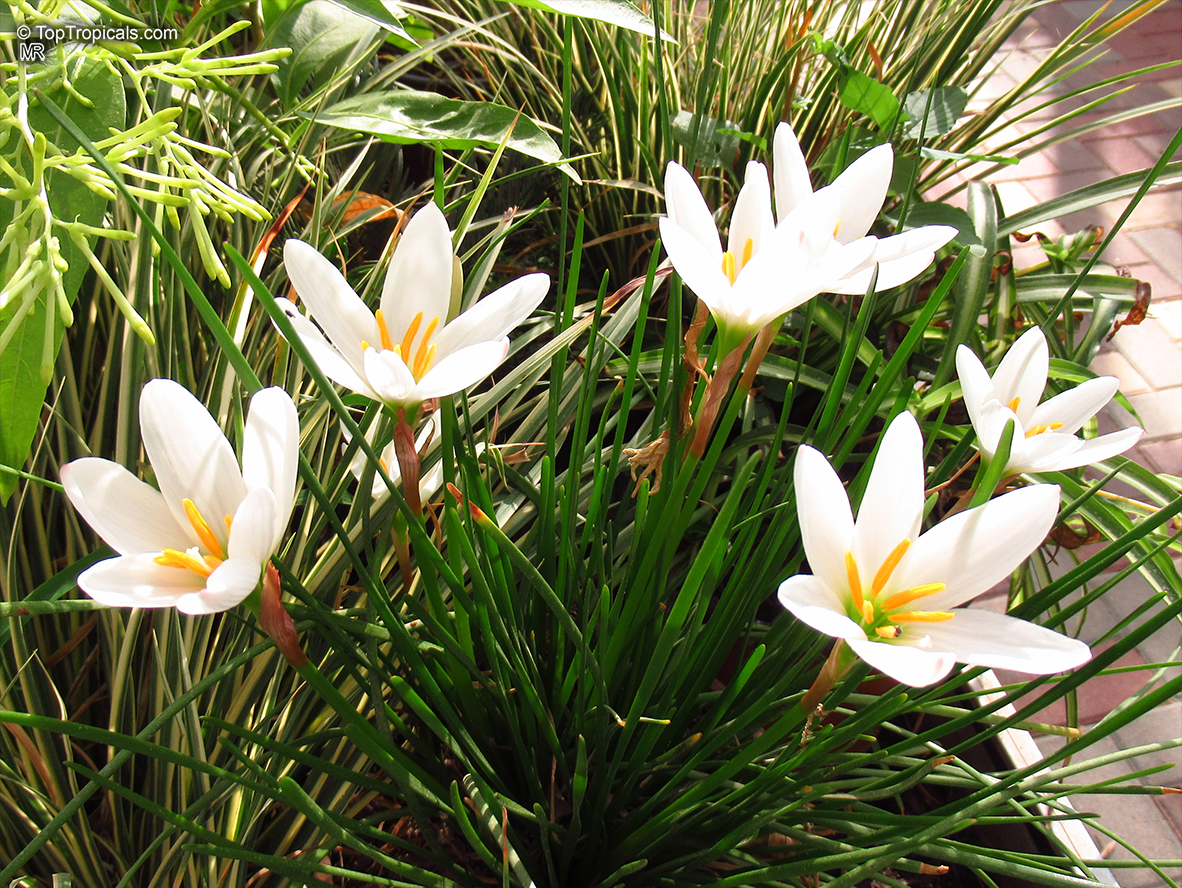Pictogram Guide · Mouse over pictogram for definition
Zephyranthes sp.
Fairy Lily, Zephyr Lily, Magic Lily, Atamasco Lily, Rain LilyFamily: Amaryllidaceae (Formerly:Alliaceae / Liliaceae / Amaryllidaceae)
Origin: USA, Central and South America











Various members of the genus may bloom spring only or repeat and continue into autumn, often a few days after rainstorms thus one of the common names, Rain Lily. Most are spring or summer flowering.
Cultivation from seed is easy in this group. Seeds are papery and can be floated but they sprout very easily sown under just a thin covering of sowing medium. Sow the seeds in a well-drained mix and keep in a warm place. The seedlings will grow well in warm weather and respond well to fertilizer. As with any papery seeded amaryllids, these have a relatively short viability period.
Zephyranthes pulchella - Showy Zephyrlily - is found in the coastal prairies and wet roadsides of eastern Texas and Gulf Coast Louisiana. The leaves grow through the winter and spring and die off in summer; flowering occurs in autumn. Leaves are linear and sedge-like and flowers are golden yellow. Pulchella means "pretty". These spectacular rain lilies growing in the highway medians near Refugio, Texas, on the east coast of that state. The glossy green leaves serve as a nice foil to the bright yellow flowers that are held just atop the foliage. The vigorously multiplying clumps flower for us from late summer into fall.
Zephyranthes flowers are very similar to Habranthus flowers and both are called rain lilies. Habranthus flowers point upward BUT at an angle and have unequal stamens, and Zephyranthes flowers point straight up and have equal stamens. Zephyranthes flowers tend to be star shaped and Habranthus have somewhat irregular flowers. Additionally, the seeds of Habranthus are slightly winged (and thicker).
See Article about Zephyranthes.
